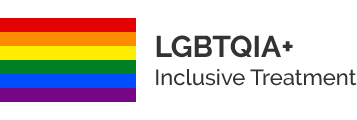Self-injury can often times be hidden in plain sight, making it difficult to identify. Understanding and recognizing the signs, symptoms, risks and more is the first step in the recovery journey.
Understanding Self-Injury
Learn about self-injury
The terms self-harm, self-mutilation, self-abuse, or self-injury (SI) refer to the act of purposely harming oneself. Often referred to as “cutting,” a common way people hurt themselves, cutting isn’t the only way a person can engage in self-injury. Self-harm is not usually a suicidal behavior; if this happens, it is usually by accident and not intentional. It can be particularly challenging for people to understand the purpose that self-injury serves. The typical age of onset for self-injury is in the late teens to early adulthood; however, this depends on the reasons for the self-injury. Self-injury may serve as a way to express emotions unable to be put into words, feel a sense of control in the person’s environment, as a means of self-soothing or decreasing anxiety, as a way of releasing pain and tension, as a means of relieving guilt, or helping the person to feel alive. Self-harm is a complex disorder and often a symptom of other types of mental health disorders.
Some of the most common types of self-harm include:
- Cutting
- Sticking objects into the skin
- Banging head against the a hard surface
- Scalding or burning oneself
- Trichotillomania (pulling out hair)
- Hitting oneself with a hard object such as a hammer
- Skin picking or pulling off scabs
- Intentionally interfering with wound healing
- Swallowing poison or other inappropriate objects
- Breaking bones in the hands and feet
Statistics
Self-injury statistics
As self-injury frequently occurs in private, rates of self-harm are difficult to determine. Estimates vary widely from 3% to 38% in adolescents and young adults. Studies conducted with university students demonstrated a 17% lifetime prevalence rate in this population, with 13% reporting that they had engaged in self-harm more than once. Studies of high school students indicated prevalence rates of self-harm in this population ranged from 13% to 24%. Onset can occur in children as young as seven years old, but the age of onset is usually between the ages of 12 and 15 years. Self-injury may also begin during the college years, with surveys reporting that 30% to 40% of college students report engaging in self-harm after the age of 17.
Causes and Risk Factors
Causes and risk factors for self-injury
Research indicates that there is no single cause of self-harm, however, there are some theories associated with self-harm. These may include:
Learning – This theory suggest that the first instance of self-injurious behavior is either positively or negatively reinforced. When self-injurious behavior increases calm feelings and leads to an improvement in mood, these rewards increase the likelihood of the person engaging in the behavior again (positive reinforcement). There may also be a decrease in distress or negative feelings associated with the self-harm. This may increase self-harm as something negative is taken away (negative reinforcement).
Coping strategy –Sometime self-injurious behavior may be the individual’s way of coping with stress and therefore engage in self-harm when faced with negative life events.
Emotional regulation – Reports indicate that self-injury takes one’s mind off of extreme tension and intolerable, overwhelming emotions. The pain of self-harm distracts the person or allows them to temporarily avoid negative thoughts and feelings.
Create sensation – Sometimes people have traumatic experiences which result in the inability to experience emotions. The pain produced by self-injurious behavior triggers the production of natural endorphins, leading to a strong sense of pleasure.
Control – Some people feel they have no ability to alter or change anything in their life and become highly distressed over the chaos and unpredictable nature of their environment. Self-harm provides a sense of being in control of one part of their life.
Emotional expression – Some individuals never learn to identify, label, or properly express emotions during childhood; they may have learned that emotional expression is not appropriate. As they get older, they may use self-harm as a way to express negative emotions.
Punishment – Individuals who have grown up in homes in which they’re told that they’re defective often feel shameful, incompetent, useless, and insignificant and see themselves filled with faults. Self-injurious behavior may develop as a means of punishment for perceived transgressions.
At the Refuge, our compassionate and experienced staff understands that while others may judge your behavior, we understand that you’re doing your best to survive in an ever-changing world, and we’re ready to help you learn the skills you need to lead a life free from self-injury.
Signs and Symptoms
Signs and symptoms of self-injury
Signs and symptoms of self-injury and self-harm will vary depending upon the person, the method of self-injury, presence of substance abuse, and development of other coping skills. Some of the most common symptoms of self-injury include:
- Scarring from cuts and burns on parts of the body that can be hidden with clothing
- Recurring new wounds such as scrapes, cuts or abrasions, lacerations, or bruises
- Broken bones with inadequate explanations as to the cause
- Keeping sharp objects nearby at all times
- Injuries are always attributed to an accident
- Chronic interpersonal challenges leading to social withdrawal and isolation
- Impulse control difficulties
- Feeling helpless, hopeless, or worthless
- Internalized hostility
- Obsessing about the self-harm behavior
- Frequent thoughts about engaging in self-harm
- Following self-injury the individual may experiences severe distress, guilt, and shame
Effects
Effects of self-injury
Left untreated, self-harm can lead to many consequences, both minor and life-threatening, which is why self-injury should be treated as soon as possible. Some of the major effects of self-injury may include the following:
- Broken bones that don’t heal correctly
- Permanent scarring
- Severe bleeding and anemia
- Permanent tissue damage
- Chronic pain
- Infected wounds
- Avoidance of social interactions
- Delusional thoughts
- Negative mood states
- Substance addiction
- Death from a self-injury gone wrong
Co-Occurring Disorders
Self-injury and co-occurring disorders
There are a number of mental health disorders co-occur with self-injurious behaviors. The most frequently co-occurring, co-morbid mental health disorders may include:
- Major depressive disorder
- Post-traumatic stress disorder
- Generalized anxiety disorder
- Conduct disorder
- Oppositional defiant disorder
- Depersonalization disorder
- Dissociative disorders
- Eating disorders
- Substance use disorders
- Borderline personality disorder
- Autism spectrum disorders
- Bipolar disorder
- Anxiety disorders
- Trauma






